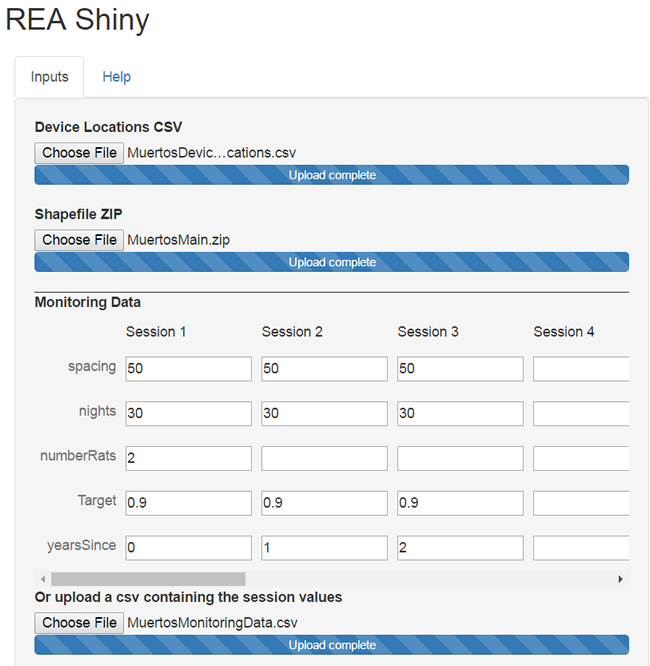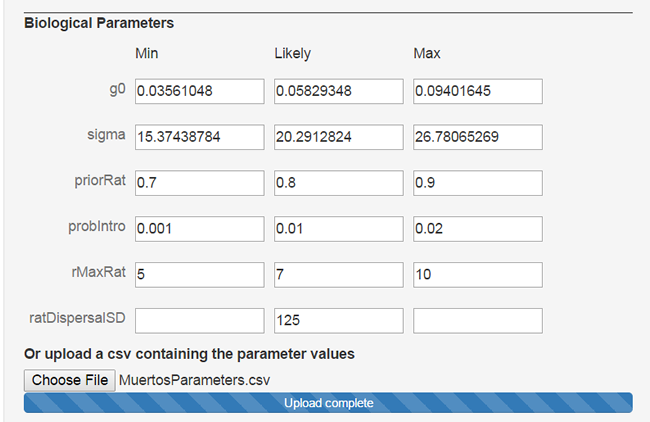Rapid Eradication Assessment (REA): a user-friendly web-based tool
Eradications of invasive species have been successful on islands all over the world. Following any eradication attempt it is necessary to confirm the success of the operation. Terminating monitoring for survivors too soon risks a false declaration, but monitoring for too long can be an unnecessary waste of resources and time. The traditional approach is to wait 2 years, and if no survivors are found then, eradication is declared successful. The risk in this ‘wait and see’ tactic is that if survivors are present in a small localised area, their population could grow and become widespread in 2 years. The eradication effort would then either have to begin again from scratch or be abandoned. Early detection and removal of survivors would result in important cost savings and biodiversity benefits, especially for difficult-to-eradicate species such as mice.
Dean Anderson and Araceli Samaniego-Herrera previously reported in Kararehe Kino (issue 19; pp 10–11) on a statistical model to quantify the probability of eradication immediately following an eradication operation on islands. While this was a useful tool, it was not designed for easy use by eradication managers, who are in most need of such a tool. Dean and Araceli, in collaboration with researchers at the University of Auckland, have developed the confirmation tool into a user-friendly graphical user interface (i.e. point and click) that is accessible online (www.rea.is).
The user inputs survey data on the spatial locations of detection devices, or a proposed spacing of an island-wide grid of such devices, the number of days or nights of deployment, and the time between eradication and surveillance sessions (see Figure 1). Also input are parameter distributions related to detection probability, home-range kernel, dispersal kernel, probability of reinvasion, and population growth rate. The software calculates the probability that pests have been eradicated from the area given that none are detected.
The Rapid Eradication Assessment (REA) tool has now been used by the Grupo de Ecología y Conservación de Islas as an eradication confirmation tool on eight successful operations for mice and rats in the dry and wet tropics of Mexico (Samaniego-Herrera et al. 2017; doi: 10.1017/S0030605316001150.). The use of REA immediately following the eradication operation removed the need for repeated return trips to confirm eradication success and allowed restoration activities to begin sooner rather than later.
Araceli Samaniego-Herrera was funded with a CONACyT doctoral scholarship and a WWF EFN fellowship.


Dean Anderson (Landcare Research) andersond@landcareresearch.co.nz
James Russell, Hannah Binnie, Jimmy Oh, Araceli Samaniego-Herrera (University of Auckland)
